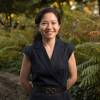Barry Twomey has been living in the same Mission Hill building for 22 years, and he’s convinced of one thing about his home's location: “I think it's the noisiest intersection in America.”
The intersection is where Huntington and Longwood avenues meet, and it is, undeniably, a hotbed of activity. Harvard's School of Public Health, Wentworth and MassArt are just a few of the schools fighting for elbow room. The Huntington Avenue fire station, one of the city's busiest, is a few doors down. Beth Israel Deaconess and Brigham and Women’s hospitals — and their helipads — are a few blocks away. Along Huntington Avenue, the E branch of the Green Line trolley screeches all day.
“I call it the symphony of the city,” Twomey said. “But there are times when everything's going on at once, and it just can be unbearable.”
Twomey is not alone in his sentiments. He’s a board member of the Mission Hill Health Movement, a neighborhood organization that promotes healthy living. The group teamed up with Erica Walker, founder and director of the Community Noise Lab at Boston University, in an effort to glean information on area noise and its effects on residents’ health.
Mission Hill is one of seven local communities — from Andover to Milton — that Walker has partnered with to conduct noise studies. There’s cause for concern: Studies have found that chronic noise exposure raises stress levels and, over time, can negatively affect cardiovascular health. In 2018, the World Health Organization released a new set of guidelines, calling noise “one of the top environmental hazards to both physical and mental health and well-being.”
Walker’s research includes looking at the effects of low and high frequencies — both generally ignored when cities create noise guidelines. Low frequencies include thunder, bus engines and aircraft takeoff. High frequencies range from crickets to sirens and the hiss of HVAC systems. Another major component of her research involves how our bodies perceive sound.
“I feel like we always talk about sound and how loud it is, and trust me, loudness is a very important characteristic of environmental sound.” Walker said. “But there are also other important characteristics of sound that are also impacting our health.”
The World Health Organization says daytime traffic should be no louder than 53 decibels. The city of Boston’s Municipal Code states anything over 70 decibels during the day is "unreasonable"— with the exception of permitted construction. But with development happening in every neighborhood, it can be a challenge to find any quiet respite. The city says it has fielded close to 300 noise complaints so far this year — construction noise has been the prime culprit.
On the balcony of Twomey’s 10th floor apartment, Walker’s decibel reader showed he would be hard-pressed to find any respite.
“Given little activity from the street, we’re seeing 66 decibels,” Walker said. "This isn’t even during rush hour. I would say it’s loud.”
When a fire truck rumbled by, the reader spiked up to 83 decibels.
But Twomey, the longtime Mission Hill resident, shrugged and said, “This isn’t even that noisy.”
These differing perceptions of what is and isn’t loud is something Walker wants to capture in her research.
“It would be really great to have a suite of metrics to describe the environmental soundscape that take into account not only its loudness, but also its frequency, composition and also perception,” she said.
Walker is relying on citizen scientists to help her record environmental sound with a smartphone app she helped to develop called the NoiseScore. So far, about 5,000 people have submitted recordings of their neighborhoods and how it makes them feel. Walker most recently partnered up with the city of Chelsea, the state’s second most densely populated city and also an industrial hub. As she works with more communities, she hopes the data she collects will offer urban planners and designers a blueprint for making cities quieter.
“I think if we truly take that holistic approach to understanding environmental sound levels," Walker said, "we’ll see right off the bat that a lot of the ways we currently design our cities is really flawed.”



